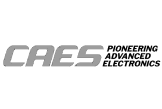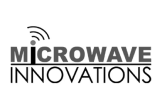Evaluating Thermal Imaging for Temperature Test
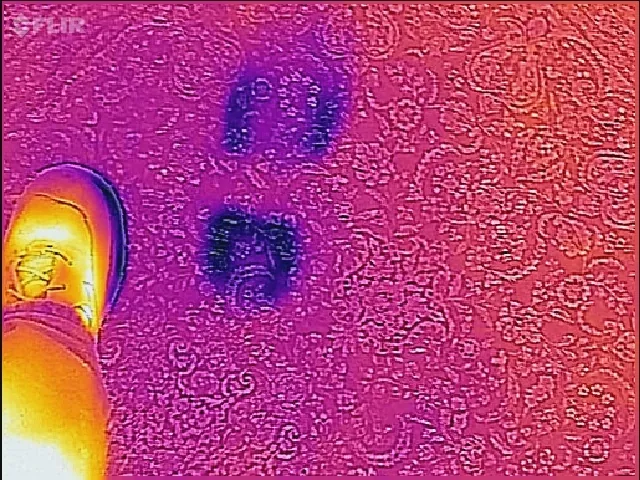
Initial FIndings
We acquired a FLIR ONE for Android from sources online, they are about $250 in most places. So the question is Toy or valuable tool. My opinion is Both! Not to deny the fun factor, (it is important to enjoy your job, right?) I say very much more on the useful tool side. In the 90’s we paid more than that just to bring our products to a facility that allowed us to do some brief tests with less conclusive results. Laboratory grade thermal imagers still have a comma in the price tag and go upward from there. This unit is primarily marketed as an uncalibrated tool but I found that the Flir One gives some very useful relative readings for testing and evaluating purposes. As for absolute temperature readings, there is still a little something to be desired. The unit’s instructions are a little vague regarding measurement accuracies but the on-screen spot reading is quite useful. The FLIR One unit offers better image quality and measures tenths where other units such as the Seek Compact thermal imager show readings with less precision.
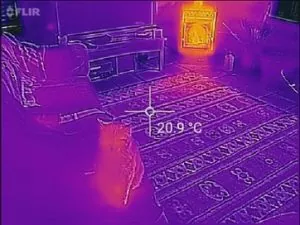

Emissivity is an important factor in thermal imaging. Per the Wikipedia link here, emissivity is the effectiveness of a surface in transmitting energy as thermal radiation. A cat would have very low emissivity whereas a black anodized aluminum surface would have nearly 1.0 emissivity. Professional grade and Non-imaging handheld thermometers all struggle some with emissivity. This unit has four different emissivity settings.
Useful Findings
For our Thermal Platform Business as you might expect it is useful in demonstrating the advantages of the thermal platforms and our Hybrid Benchtop Chamber over other environmental test equipment or thermal testing gear.
Examples here show a Thermal Platform heating up with locations of heaters evident and then a few seconds later stabilized at a hot temperature.
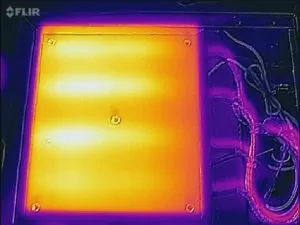
Thermal Platform heating to the temperature

In this case, further adjustment of the camera’s emissivity settings allowed more accurate absolute readings.
The thermal imager is also very useful in finding gradients during thermal tests and hot spots due to internal device heating or “convection shadows” which frequently happen with standard temperature test chambers.
Sensitive Relative Readings
Here is a surprising little demonstration. Having a foot on the carpet for just 20 seconds, the heat transmitted through a thick boot sole and sock shows up as 2-3 tenths of a degree temperature gradients several seconds after the foot was moved. More specific thermal test examples to follow but you can see how this tool would be useful to evaluate thermal stresses in electronic and power control systems.
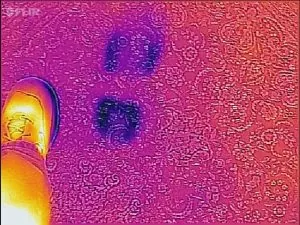
Here are what I feel to be the takeaway points:
- Quick easy and low-cost demonstration of temperatures differentials.
- Accurate absolute temperature readings are more challenging.
- Paying attention to the unit under test emissivity helps achieve more accurate results.

